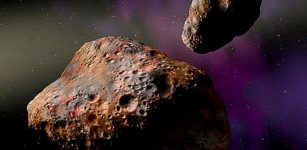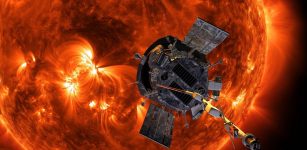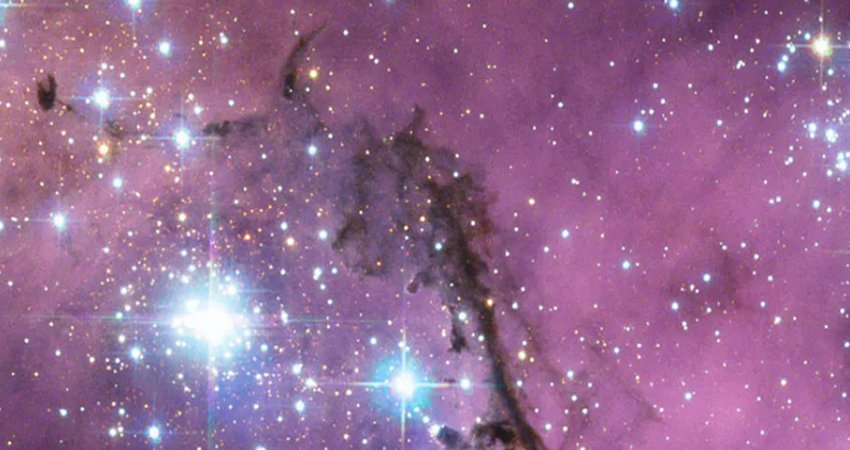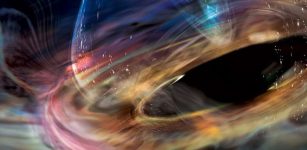Earliest Example Of Merging Galaxies Yet – Discovered By ALMA
Eddie Gonzales Jr. – MessageToEagle.com – Researchers using the Atacama Large Millimeter/submillimeter Array (ALMA) report the earliest example of merging galaxies yet discovered.
Takuya Hashimoto at Waseda University, Japan, and his team observed B14-65666, an object located 13 billion light-years away in the constellation Sextans. Because of the finite speed of light, the signals we receive from B14-65666 today had to travel for 13 billion years to reach us.
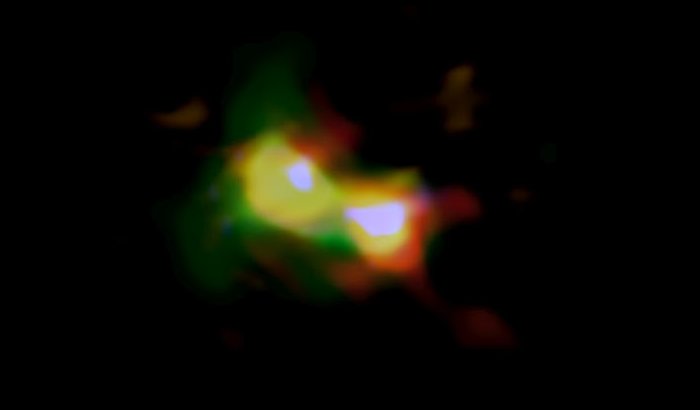 Composite image of B14-65666 showing the distributions of dust (red), oxygen (green), and carbon (blue), observed by ALMA and stars (white) observed by the Hubble Space Telescope. Credit: ALMA (ESO/NAOJ/NRAO), NASA/ESA Hubble Space Telescope, Hashimoto et al.
Composite image of B14-65666 showing the distributions of dust (red), oxygen (green), and carbon (blue), observed by ALMA and stars (white) observed by the Hubble Space Telescope. Credit: ALMA (ESO/NAOJ/NRAO), NASA/ESA Hubble Space Telescope, Hashimoto et al.
In other words, they show us the image of what the galaxy looked like 13 billion years ago, less than 1 billion years after the Big Bang.
ALMA achieved the earliest observation of radio emissions from oxygen, carbon, and dust in B14-65666. The detection of multiple signals allows astronomers to retrieve complementary information.
Data analysis showed that the emissions are divided into two blobs.
Previous observations with the Hubble Space Telescope (HST) had revealed two-star clusters in B14-65666. With ALMA, the team was able to show that the two blobs do in-fact form a single system, but with different speeds; which indicates that the blobs are two merging galaxies.
The total stellar mass of B14-65666 is less than 10% that of the Milky Way, meaning that it’s in its earliest phases of evolution. Despite its youth, B14-65666 is producing stars 100 times more actively than the Milky Way. Such active star-formation rate is another signature of galactic mergers because the gas compression in colliding galaxies naturally leads to bursty star-formation.
“With rich data from ALMA and HST, combined with advanced data analysis, we could put the pieces together to show that B14-65666 is a pair of merging galaxies in the earliest era of the Universe,” Takuya Hashimoto at Waseda University, Japan explains in a press release.
“Detection of radio waves from three components in such a distant object demonstrates ALMA’s high capability to investigate the distant Universe.”
Written by Eddie Gonzales Jr. – MessageToEagle.com Staff



